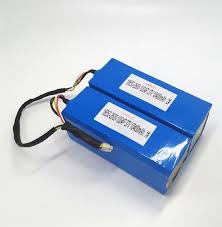stainless steel coil slitting machine
The Role and Functionality of Stainless Steel Coil Slitting Machines
In the modern manufacturing industry, the use of stainless steel has become ubiquitous due to its strength, durability, and resistance to corrosion. A critical component in the processing of stainless steel is the stainless steel coil slitting machine. This specialized equipment is designed to cut large rolls of stainless steel into thinner strips or coils, which can then be utilized in various applications, including automotive, construction, and appliance manufacturing.
Understanding the Stainless Steel Coil Slitting Process
The slitting process begins with a large coil, typically weighing several tons, which is unwound and fed into the slitting machine. The machine is equipped with multiple rotary knives that slice the stainless steel coil into the desired widths. Each knife can be adjusted depending on the specifications required by the end product. This capability makes slitting machines not only versatile but also essential for meeting the demands of exacting manufacturing processes.
One of the primary advantages of using a stainless steel coil slitting machine is the ability to produce multiple strips in a single operation, significantly improving efficiency and reducing material waste. The precision of the cuts ensures that each strip is uniform, allowing for seamless integration into subsequent manufacturing processes.
Key Components of a Slitting Machine
A stainless steel coil slitting machine consists of several key components that work in harmony to deliver high-quality results
1. Uncoiler This is the mechanism that supports and unwinds the stainless steel coil. It typically includes a drive device to control the speed and tension of the coil as it is fed into the machine.
stainless steel coil slitting machine

2. Slitting Head This is the heart of the machine, where the actual cutting occurs. It consists of various rotary knives that can be adjusted to create strips of different widths. The slitting head may also include an anvil or a backup roller to provide support during the cutting process.
3. Recoiler After slitting, the individual strips are wound back onto smaller coils using the recoiling unit. This component ensures that the finished product is organized and ready for transportation or further processing.
4. Control System Modern slitting machines are equipped with advanced control systems that allow operators to manage the speed, tension, and width of the cuts easily. Some machines even feature automated settings that enhance consistency and reduce human error.
Applications of Slit Stainless Steel
The thin strips produced by stainless steel coil slitting machines have a wide array of applications. In the automotive industry, they are often used to manufacture components such as brackets, panels, and trims where strength and aesthetics are crucial. In construction, slit stainless steel is used for roofing, gutters, and structural supports due to its durability and resistance to weathering.
Moreover, the appliance industry utilizes these strips for the production of household items like refrigerators, ovens, and dishwashers, where stainless steel's resistance to corrosion is a vital feature. The flexibility of stainless steel, combined with the efficiency of slitting machines, ensures that manufacturers can meet the high standards expected by consumers.
Conclusion
Stainless steel coil slitting machines play an indispensable role in the processing of stainless steel, transforming bulky coils into versatile strips that cater to a diverse range of industries. With advancements in technology, these machines have become more efficient, precise, and capable of meeting the challenging demands of modern manufacturing. As industries continue to evolve and require higher-quality materials, the significance of stainless steel coil slitting machines will undoubtedly grow, making them a pivotal component in the steel processing landscape. As manufacturers seek to optimize operations while maintaining quality standards, investing in advanced slitting technology will be essential for future success.
Share
-
The Best Lubricants for Aluminum Roller GuidesNewsJul.23,2025
-
Slitting Machine Applications in the Packaging IndustryNewsJul.23,2025
-
Rolling Roller Balancing Techniques for Smooth OperationNewsJul.23,2025
-
How To Optimize An EV Battery Assembly LineNewsJul.23,2025
-
Energy Efficiency in Modern Battery Formation EquipmentNewsJul.23,2025
-
Automation Trends in Pouch Cell Assembly EquipmentNewsJul.23,2025







